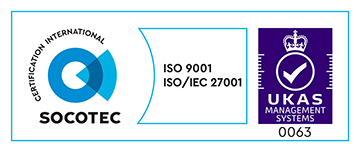We’ve all been there. A leaky tap, a loose plug socket, that lift that keeps breaking down. You know you need to report it but you can’t find your login.
So you call up the housing repairs team and wait on the phone. Then they tell you to write down a reference number and to supply more images by email.
At the end of it all, you wonder why you didn’t just report it online in the first place…
Surely resetting your password for the umpteenth time would have been faster, right?
This is a familiar situation taken from our interviews with 80 residents from councils across England.
When we asked residents why they don’t use existing report-a-repair online services, it was often down to one thing: having to remember and enter a username and password.
Call centres aren’t quicker
Oustanding housing repairs is a real source of stress and frustration for many.
We don’t want to worry about repairs. We want to report them as quickly as possible and be confident that it will be fixed in the next few days.
Logins create barriers and those barriers push us towards more easily accessible routes – like a phone call (or an email).
But calling isn’t quicker, it takes an average of 18 minutes to report by phone (with a 9-minute waiting time) and is often only available 9-5. So you’ll just have to wait until opening hours to make that report.
Better make a note…
…or adopt an online portal that removes the inconvenience of requiring a login – where you can enter all the information you need and get that reference number (emailed to you too) at a time that suits you.
Whether it’s 8 AM or 3 AM (we aren’t judging) you can rest easy knowing your report has been received and will be addressed as soon as possible.
This option takes the stress away from residents who might struggle to call during working hours or who struggle to remember to call.
We need an accessible and inclusive solution
Some of the most vulnerable people in society live in social housing. They’re reliant on others, like family members, wardens or other support networks. Removing the login opens the door for members of that support network to report repairs on a resident’s behalf.
Additionally, our research shows that people who have accessibility needs or are not native English speakers can struggle with the demands of a telephone call.
For them, it’s easier to log something online with accessibility tools such as screen readers, increased font size and built-in translators. We’re pleased to say that our wording and journey have been tested and built with these user groups in mind.
We’re not suggesting we do away with phone calls entirely. Of course, some users will need to report a repair by telephone.
Additionally, offering an online housing repairs portal as a preferred option frees up other channels reducing call wait times for those who need to use this method of contact.
Misconceptions about a login-free platform
From our extensive research, we know that login-free, passwordless access to an online housing repairs reporting tool is the solution residents prefer.
For housing managers, many have invested in technology and digital service adoption campaigns to drive users to online reporting over manually monitored channels such as emails and call centres to cut down operating costs and increase efficiencies of teams, allowing officers to focus more on scheduling and repairs, than recording and triaging inbound requests.
Yet, while we’ve all come to accept single sign-on (SSO) and praised its ease of use when it comes to logging into numerous digital platforms, passwordless access to online portals is often met with skepticism.
Below we’ve addressed two common misconceptions when it comes to login-free access.
Misconception 1: Won’t users abuse the service?
A common scenario we often address is the assumption that residents will want to report multiple issues, including non-repair-related ones.
This could be, for example, spamming the service with general enquiries such as who their councillor is, when the bins are being emptied and so on. Yet, our research showed that 95% of all enquiries by phone to repairs teams were related to a repair. Research shows that having this kind of information freely available on your website will help reduce calls related to general enquiries by 29%.
Misconception 3: It won’t cut down calls
From the research, we believe that we could increase digital uptake of 40-75% based on feedback from residents about an online housing repairs reporting platform and their own digital habits/ literacy.
Currently, less than 20% of users report a housing repair online – this is due to:
- Lack of knowledge about the platform/ its existence
- The need for a login and other details
- The misconception that calling is faster
- A lack of understanding of tenant/ landlord responsibilities
These issues can be tackled by ensuring there is adequate education on the platform and tenant/ landlord responsibilities, which I’ve covered in the next section.
But what I find really surprising is that currently, 40% of all calls are follow-ups about existing repairs – suggesting very high levels of failure demand which could easily be rectified through the features we’ve built into our platform such as:
- Reference numbers and email updates to track the progress of a repair and reduce calls to request updates
- The ability for residents to choose, change and cancel their appointments to reduce missed appointments
- The ease of accessing all this information through a login-free system and email updates
Misconception 4: Users won’t adopt a system they don’t get
Combining our research with numerous journal articles reviewing the adoption of online portals, we’ve yet to see any evidence that users won’t use an online portal or a login-free approach.
In fact, the data suggests that so long as there is trust between the council and residents and users are made aware of the existence and purpose of the platform, they will use it for its intended purpose especially if it’s easier to use and more accessible than other forms of reporting housing repairs.
As part of onboarding new councils, we also make recommendations on how those councils can inform users about the platform to help with adoption and channel shift – freeing up manned channels for more urgent requests and repairs work.
Promotion is the key to adoption
As mentioned in Misconception 4, making sure your tenants are aware of the online service is key to adoption.
How can you encourage them to use it?
What information and help do they need?
Look at all the usual touch points, like rent statements, tenant sign-up, IVR (interactive voice response) messaging and use these to promote the online service.
From user research, I’ve seen that people are more likely to trust a phone call over using an online tool. So explain how this tool can be trusted to get things logged and fixed. Promote the services to others in the community, like the sheltered housing wardens – can they show residents how to use it or be encouraged to use it on their residents’ behalf?
Also, consider the complete journey. If your existing online repairs service results in a phone call to agree on an appointment time, this only encourages the tenant to ring up next time. Confidence in an authority’s digital maturity is built by showing residents a complete online journey that leaves them informed of what’s happening next.
If you’re thinking of putting in place an online repair service it’s time to weigh up the pros and cons of having a login. The best way to do this is to get out and speak to the people who matter the most: those who’ll be using it.
Learn more about our login-free online housing repairs reporting software
Get in touch and we will:
- understand your challenges and needs
- showcase the features that align with your needs and processes
- explore the ways it connects to your pre-existing tools
- share upfront and subscription costs




